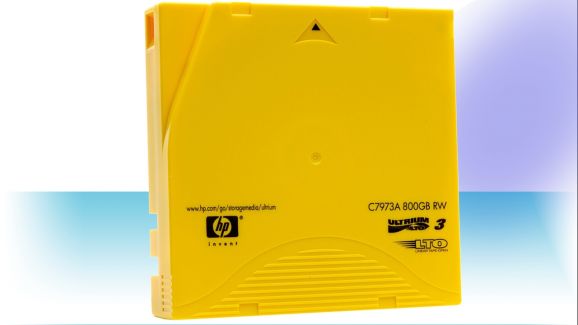Long, long ago, when computers needed whole rooms due to their massive size, information storage was best achieved using tape drives. A long reel of tape, stamped with rewritable positive or negative dots which create binary code, wa sthe best method of storing huge amounts of data (at that time).

Far from the whirring behemoths of the last golden age of computing, today’s uses of the tape drive have obviously declined in favor of solid state data drives or hard discs. Well, not anymore. After a lengthy hiatus, it seems mass storage could once again be possible on a tape drive.
SEE ALSO: Lumia Phones To Drop Nokia Branding
The LTO technology created by Ultrium, not the biggest name in computing (yet), has led to the creation of a tape drive which can hold a whopping 120TB of data. The cartridge, measuring just 102.0 × 105.4 × 21.5 mm, can be used in a storage device which can hold multiple tapes for expandable storage. Just 10 of these tapes could hold all the data ever needed by a website or other organisation with massive storage needs.
Although the 120TB figure is for capacity of compressed data (in terms of native storage it works out at 48TB), the cartridge is possibly one of the greatest achievements in tape and cartridge technology.
The big three companies behind tape technology, HP, IBM and quantum, have disclosed plans for two new generations of tape storage, gen 9, which allows storage of 62.5TB with an 1.77gbps transfer rate, and gen 10, which is the 120TB model with a projected data transfer rate of a whopping 2.75gbps.
SEE ALSO: Microsoft To Swap Out Noisy Xbox Ones
Currently used gen 6 tape drives only offer 6.25TB of compressed storage data transfer rates of up to 400MBps, so these two new projected generations of tape storage cartridges could very well be the best yet.

Will the big companies start to move over, or back, to tape once these enormous capacity cartridges hit the market? Well, it won’t be for a long time, with gen 7 tapes expected to hit the market by the end of the year, gen 8 two years after that, then gen 9 and 10 at 2 year intervals. Something to look forward to in the future, no doubt about it.
Via: Techradar
Source: HP
